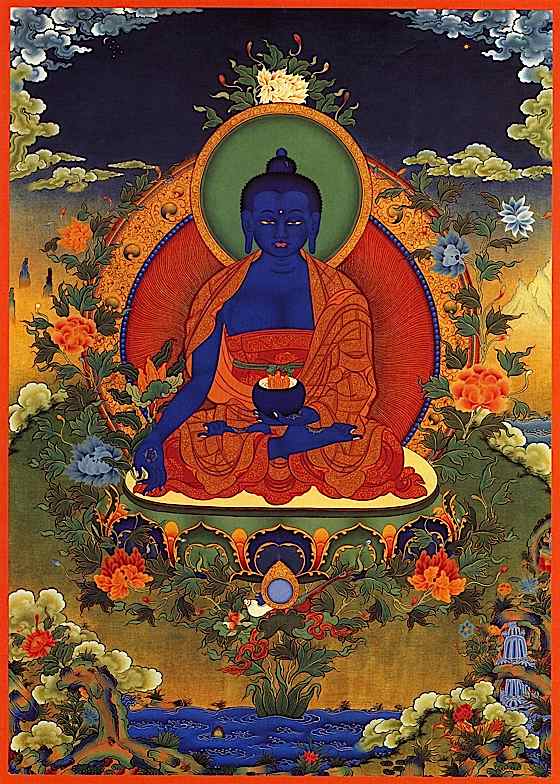The Medicine Buddha is a popular figure in Mahayana Buddhism, especially in Tibet and Japan, as well as China. In Sanskrit, his name Bhaișajyaguru, and he features in a sutra entitled Bhaișajya Guru Vaidūrya Prabhā Rāja Sutra, which can be translated as “Medicine King Master and Lapis Lazuli Light.” The title alludes both to his function as a Buddha of healing, and to his trademark association (at least in Tibetan Buddhism) with the color deep blue.
Bhaișajyaguru is said to be a guardian of the Eastern direction, and may actually supplant The Buddha Akshobhya, who is far more commonly said to fill this role. Just like the far more famous Amitabha, he also rules over his own Pure Land, known as Vaidūryanirbhāsa or “Pure Lapis Lazuli.”
In Japan, he was known as Yakushi, and his popularity no doubt was bolstered by the fact that he plays an important role in The Lotus Sutra, which is arguably the most influential Sutra in Japanese Buddhist traditions. (Anyone wanna argue with me on that?) His cult in Japan is very old, dating back to the seventh century. In the late eleventh century, the author of the Sarashina Nikki (a famous literary diary/memoir) wrote of her attachment to a statue of Yakushi that had been made in her size, and her grief at being forced to leave it behind in a move.

